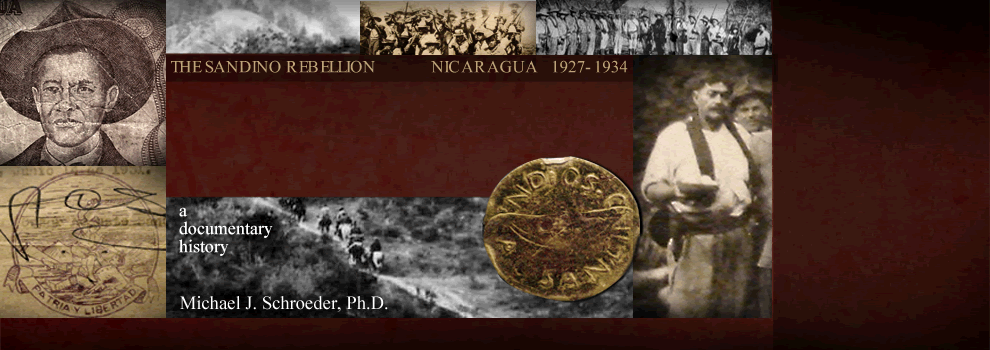|
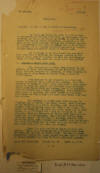 G-2 Report. 3,020-d G-2 Report. 3,020-d
NICARAGUA.
Subject: Report of Trip to Field of
Operations.
From: M/A Nicaragua.
Report No. 32.
April 3, 1927.
At 12.15 pm, March 26, 1927, I left
Managua by automobile in company with
Major D. Rodriguez, U.S.A., retired, and
Mr. A. A. Cohen, my clerk, to observe
the forces of General Rivers Delgadillo,
consisting of 700 men, on the march
between Tipitapa and Teustepe enroute to
concentration area west of Muymuy and
south of the Rio Grande and to inspect
positions occupied by General Nogüera
Gomez immediately south of Tierra Azul.
At 12.45 pm, March 26 a truck was met
about half way between Tipitapa and
Managua enroute to the latter place with
20 wounded men from the San Goronimo
fight of March 14th, just two weeks
after the battle!
I. MANAGUA – TIERRA AZUL ROAD.
The distance is 19 miles from Managua to
Tipitapa, 17 miles from Tipitapa to Las
Banderas, 18-1/2 miles from Las Banderas
to Teustepe, 18 from Teustepe to Boaco
and 21 from Boaco to Tierra Azul, a
total of 93-1/2 miles.
From Managua to Las Banderas is a fair
dry season automobile road, with no bad
grades. From Las Banderas to Boaco is a
bull cart road with 7 river crossings
and many bad grades and frequent long
stretches filled with loose rocks and
stumps, but it is passable with
difficulty for a light automobile. Two
hundred men could make it passable for
light trucks in ten days. From Boaco to
Tierra Azul is a poor pack trail with
many bad grades.
The country is fairly open from Managua
to Tipitapa and is dotted with small
farms. From Tipitapa to Las Banderas is
a cattle country, well watered and
covered with excellent grass and only a
few farms. The woods and brush off the
road are quite dense and in many places
it is difficult for a man on horseback
to get through. From Las Banderas to
Tierra Azul there are no farms and few
inhabitants, except in the little towns
along the road. The country is rolling,
covered with excellent grass, well
watered and stocked with fat cattle. The
woods and brush are so thick that the
country is almost impassable off the
road and trails.
There are practically no roads and very
few trails. There is a telegraph and
telephone line along the road all the
way to Tierra Azul. The road becomes
impassable during the rainy season for
any kind of wheeled transportation and
very difficult for pack animals.
 p.
2 p.
2
II. FORCES OF GENERAL RIVERS DELGADILLO
ON MARCH.
At 2.15 pm we passed the rear elements
of Rivers Delgadillo’s command, under
General Vidaurre, consisting of 250 men
with 6 Browning machine guns at Las
Banderas.
At 4.25 pm we passed the main body, 300
men under General Rivers Delgadillo
about four miles south of Teustepe, and
upon arrival at Teustepe at 5 pm we
found his advance guard of 150 men
there.
(a) Disposition for the march.
The advance guard of 150 men preceded
the main body by about four miles, while
the rear element of the command, 250
men, followed one days’ march in the
rear of the main body. As a command of
this size can camp anywhere there is
water, and as none of its elements were
in supporting distance of each other
there appears to be no tactical or other
reason for such great dispersion in
depth. The advance guard and main body
remained all day Sunday in Teustepe
waiting for the rear element to catch
up, thus losing 24 hours valuable time.
Some of the Conservative generals do not
seem to have any conception of the value
of time, and the procrastination during
the past three weeks is almost
unbelievable, especially in view of the
fact that the rainy season will commence
in about six weeks and the campaign must
be concluded before then or drag over
for another year.
(b) Bivouacs.
The men have no tents; they simply sleep
in the open or in the huts of the
inhabitants of the little towns where
they stop for the night. Usually no
outpost, interior guard or patrols are
put out.
(c) Medical Attendance.
No medical officer or medical personnel
or medical supplies accompanied the
command and no provision was made for
the evacuation of suck & wounded. No
attempt was made at camp sanitation.
(d) Armament.
The men were armed with Springfield
rifles, Mod. 1898. The command also had
12 Browning Machine Guns and one light
cannon. Men carry 240 rounds of
ammunition on their person. A reserve of
300 rounds per man is carried in the
train.
(e) Supply & Transportation.
The transportation consisted of 17 bull
carts, 50 pack mules and horses. The
train carried 15 days rations and 300
rounds of reserve ammunition per man. No
forage is carried – the animals subsist
by grazing. The grass was fine and the
animals were in good condition.
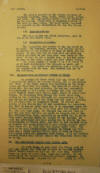 p.
3 p.
3
The ration carried in the trains
consists of hardtack (native), rice,
beans, brown sugar, coffee and lard. The
men usually carry a little hardtack on
the person. Fresh meat is supplied
locally at the various camp sites. The
beef cattle required are rounded up and
slaughtered the day the troops arrive.
(f) Communications.
The command had one field telephone,
used to tap in on commercial wire.
(g) Discipline & Morale.
The discipline and morale of the men
seemed to be good. The General, however,
was greatly worried on account of the
shortage of oxen or bulls for his carts.
He had only two to each cart and four
are really required to get them over
many parts of the road. He had to use a
snatch team to get his carts up many of
the steep grades and this caused delay.
The usual number of women (3 or 4 to
every 15 or 20 men) accompanied the
command as cooks and washwomen. One
woman was marching with a rifle in the
column with the men. Her husband was one
of the soldiers.
III. HEADQUARTERS OF GENERAL VIQUEZ AT
BOACO.
We arrived at Boaco about 8.30 pm, March
26 and I immediately called on General
Viquez, who is commanding all three of
the small armies now operating in the
Matagalpa and Chontales districts. The
General is about 45 years old, fat and
good natured. He has not personally
inspected any of his armies recently,
not even the one under Nogüera Gomez
near Tierra Azul, about 21 miles from
Boaco. He discussed very freely the
whole situation, giving me the location,
strength and composition of his own
troops and those of the enemy and his
plan of attack, all of which will be
discussed later. He stated the morale of
his troops was low and desertions too
numerous, but that it was no worse than
was to be expected under existing
conditions and the long time that had
elapsed since the men were last paid. He
thought the present plan to pay the men
five dollars per month on account out of
the new million dollar loan, reported in
my cable No. 9, March 26th would greatly
boost the morale of the troops. He said
the government had been urging him to
attack the revolutionists at Tierra
Azul, but that he had avoided doing so
because the enemy occupied a very strong
natural position there and he felt sure
the attack would fail. His plan is to
make simultaneous attacks on Muymuy and
Matiguas and a feint against Tierra Azul
as soon as Rivers Delgadillo makes his
junction with Reyes. I do not believe
General Viquez will attack unless the
President forces him to do it.
IV. THE GOVERNMENT FORCES NEAR TIERRA
AZUL.
We left Boaco on mule back for Tierra
Azul at 9.30 pm, Sunday the 27th and
arrived at General Nogüera Gomez’
headquarters at 5.00 pm the same day.
General Gomez is about 40 years old,
quiet and modest. He was educated at the
former Nicaraguan military academy. He
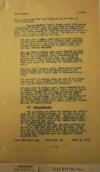 p.
4 p.
4
made a very favorable impression
on me, as also did General Mayorga.
General Nogüera Gomez’ forces total 1730
men on paper with 39 machine guns and
two 76 mm cannon, but the general told
me his actual strength did not exceed
1600 men. His forces occupy the high
ground south of the Olama River, on a
front of about 8 miles. His troops are
disposed from right to left as follows:
250 men with 7 machine guns under
General Sanchez. Sanchez has established
a detached post, consisting of 50
mounted men with one machine gun about 1
mile from his position on a trail
leading to the N.W. toward Matiguas.
500 men with 4 machine guns under
General A. Cruz Hurtado on high ground
two miles west of Sanchez. Hurtado has a
detached post, consisting of 50 mounted
men with 1 machine gun, on a trail at
Buena Vista 3 miles east of his
position. (Note: This post should be
furnished by Sanchez, but is not.)
180 men with 3 machine guns, under
General José María Mayorga on the high
ground west of the Puerta river and 3
miles west of Hurtado’s position.
300 men with 12 machine guns and two 76
mm cannon (obsolete), under Nogüera
Gomez, on high ground 1,000 yards west
of Mayorga’s position.
500 men with 13 machine guns, under
General Marcos A. Benavente, on Zanás
hill, 2 miles west of Gomez’ position.
Zanás hill is high, naturally strong and
dominates the trail to Boaco and the
left flank of the position. It is on the
north bank of the Olama river, about
3,000 yards southwest of Tierra Azul and
about 2,000 yards south and slightly
west of Caballo hill.
(a) Entrenchments.
The positions of Gomez and Mayorga are
entrenched for all around defense, as
are also those of most of the generals
under him. Gomez and Mayorga have
located their firing lines generally on
the military crest, but some of the
others have theirs on the geographical
crest.
The tendency of all the generals seems
to be to get as high upon the hill as
possible. Gomez has some lines of
trenches about 50 yards in the rear of
the firing line, but I don’t consider
this wrong as the enemy has only two
obsolete cannon opposing him.
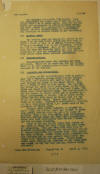 p.
5 p.
5
The trenches are really “fox holes”.
They are constructed for either one of
two men and are placed from 5 to 10
yards apart. Some are dug in, others are
constructed by piling up loose stones,
and still others by a combination of
diffing and stones. No wire
entanglements are constructed. The
principle of counter attack is not
understood.
(b) Machine guns.
The machine guns and cannon are placed
in the front line and but little effort
has been made to clear a field of fire
or to obtain flanking fire. Of course
overhead fire is not attempted. Direct
fire alone is employed. Most of the
machine gunners are from the National
Guard and they understand how to fire
and manipulate the guns but know very
little about their tactical employment.
(c) Communications.
Communications within the position are
very difficult. There are no roads and
but few trails. There is no wire
communication between the various
elements of the command.
(d) Security and Information.
A force of 800 revolutionists with 20
machine guns and 2 obsolete cannon under
General Beltran Sandoval, hold Caballo
hill and the high ground east thereof
and north of the Olama River. They have
a front of four or five miles. The
contending forces are about 3,000 yards
apart on the west flank and about 5,000
yards on the east flank. The Olama river
flows between them. The terrain between
the two forces is almost level and is
covered by a dense undergrowth, a
jungle, with no known trails except the
one from Boaco to Tierra Azul and one
along the Puerta river. Tierra Azul is
no man’s land, as it were. Sandoval’s
headquarters, however, are in a farm
house about 2,000 yards east of the
outskirts of Tierra Azul.
Neither side either outposts or patrols
no man’s land, and neither makes any
attempt to maintain actual contact with
the other by means of patrols. Both
sides rely solely upon information
obtained through spies and from local
inhabitants. Gomez gets some information
from Brooks & Mason, the two American
aviators.
Some of the men in the front line remain
on the alert at night and they afford
the sole means of protection. They get
away with this kind of criminal
negligence because the intervening
terrain is almost impassable and because
both sides employ the same tactics.
Either force could withdraw from its
position and be gone several days before
the other would discover it was gone.
Either force could march through the
position of the other most any night, or
day for that matter, without being
detected.
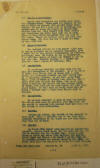 p.
6 p.
6
(e) Morale & Discipline.
Morale and discipline are pretty good
under the circumstances. Gomez says the
payment to the men of $3.00 on account
will greatly boost their morale. He has
had a high rate of desertion, but thinks
most of those who wanted to desert have
already done so. They desert with their
rifles and ammunition and throw them
away and go home. There is very little
desertion from one side to the other.
There are several women soldiers with
Gomez’ army. His cook has her 6 weeks
old baby in camp with her.
(f) Hospitalization.
One medical officer is with Gomez’ 1,600
men. He has no medicine and no surgical
equipment, save a small kit of his
private instruments, no bandages,
dressings, etc. Of course he has no
assistants. I am told the armies of
Reyes and Rivers D. are in the same fix.
General Mayorga is a doctor and carries
a small supply of bandages, etc.
(g) Evacuation.
No provision whatever has been made for
the care and evacuation of the wounded.
As it is about 21 miles from Tierra Azul
to Boaco over a pack trail, all
seriously wounded men will surely die.
It is possible, however, to get bull
carts from Tierra Azul to Boaco by
making long detours, but it takes five
days to make the trip. And as no
adequate facilities for caring for the
wounded exist at Boaco, they will not be
much better off when they reach there.
It will take at least eight days to
bring a wounded man (a lier) from Tierra
Azul to Managua.
(h) Sanitation.
No attempt whatever is made at camp
sanitation. The troops have been in
position over two weeks and the ground
is covered with decayed beef and bones
and the stench is very noticeable.
(i) Health.
Strange to relate, the health of the
command is very good. This is probably
due to the fact that sanitary conditions
at the front are not much worse than
they are at home.
(j) Supply.
On March 28th Gomez’ army had had no
subsistence supplies, except fresh beef,
for two days and was not due to receive
any for another day. I met a pack train
of bulls and mules with supplies for him
between Boaco and Tierra Azul about 2 pm
on the 28th and it probably reached the
troops early on the 29th. It takes four
days for supplies to reach him from
Managua.
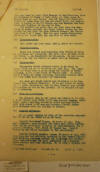 p.
7 p.
7
They are sent by truck
from Managua to Las Banderas, from Las
Banderas to Boaco by bull cart, and from
Boaco to Tierra Azul by pack train.
General Gomez has about 500 rounds of
ammunition per man and about 3,000 per
machine gun. A convoy of 40,000 rounds
was met between Las Banderas and
Teustepe on the way to him.
Two hundred men could make the road from
Las Banderas to Boaco passable for light
trucks during the day season and cut
down the time between Managua and Tierra
Azul from 4 to 2 days. But for some
reason Nicaraguan soldiers are never
used for any kind of road work.
(k) Transportation.
Bull carts and pack oxen, bulls, mules
and horses.
(l) Communications.
Gomez has direct communication with
Viquez at Boaco by telephone and
telegraph, and with Reyes at Mina Verde
and Rivers D. at Esquipulas by
telegraph. He can communicate with the
two latter by phone through Managua.
(m) Photographs.
Thirty-two kodak pictures taken on my
visit to Gomez which may be of interest
are analyzed. The panorama was taken
from a point about the center of Gomez’
position, 3,000 yards south of Tierra
Azul. It shows about 5 miles of enemy
position, including Caballo hill and
also Zanás hill occupied by Benavento.
The enclosed rough sketch was furnished
me by Gen. Gomez’ aid, Colonel Chamorro.
It is not drawn to scale, and is quite
inaccurate, but it does furnish some
useful information to one on the ground.
It is thought it may be of interest.
(n) Plan of operations.
The present plan is for Reyes and Rivers
D. to make a joint attack with about
1,700 men against Muymuy, while Gomez
makes a holding attack or feint against
Tierra Azul with about 1,000 men and
attacks General Zamora near Matiguas
with the balance of forces.
(o) General officers.
My personal opinion of five of the
generals commanding the troops in the
field is as follows:
General Bartolomé Viquez, 45 years of
age. Fat, well educated, good natured
and slow; has little initiative and no
particular training or qualifications
for a general officer. Will fight if
forced to. General Viquez is the first
designate to the presidency.
General Alfredo Nogüera Gomez; 40 years
of age, well educated, has had military
training in the former Nicaraguan
military academy; modest and retiring;
has initiative, determination and good
judgment and possesses above average
military ability. He is both a fighter
and a leader.
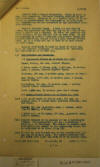 p.
8 p.
8
General Carlos Rivers Delgadillo. About
35 years of age, fair education.
Military training acquired in present
revolution. Although he is a popular
here, he is inclined to procrastinate
and impresses me as being weak and
vacillating and not possessed of any
particular military ability.
General Salvador Reyes. I have not met
General Reyes, but Americans who knew
him say he is a man of action, a leader
and a fighter. He rules the generals and
other officers of his command with an
iron hand. He has participated in
several important engagements during the
present revolution, always giving a good
account of himself. He is a young man
and is said to be half Indian and half
negro.
General José María Mayorga is about 40
years old. He is an educated gentleman,
a physician by profession and impressed
me as an able man
(p) Distribution and armament.
(1) Government Forces as of March 29,
1927.
Boaco, G.H.Q., 400 men, General Viquez.
2 miles south of Tierra Azul, 1,600 men,
39 machine guns, 2 cannon, General
Nogüera Gomez.
Tipitapa, 350 men, 4 machine guns,
enroute to Gomez.
Mina Verde, 1,000 men, 30 machine guns,
1 cannon, General Reyes.
Esquipulas, 700 men, 12 machine guns, 1
cannon, General Rivers Delgadillo.
Total 3,650 men, 85 machine guns and 4
cannon.
(2) Revolutionary Forces as of March 29,
1927.
(aa) 1,000 yards north of Tierra Azul,
200 men, 20 machine guns, 2 cannon under
generals Sandoval, Mena and Plata.
Muymuy, 500 men, ?
machine guns, 1
cannon, under General Miller, a German.
3 miles S.E. of Matiguas, 300 men, ?
machine guns, General Zamora.
(bb) General Moncada is in command of
the revolutionary forces. His
headquarters are in a ranch house 3
miles S.E. of Matiguas. The number of
machine guns with Miller and Zamora is
not accurately known, but estimated to
be about 14 or 15.
(cc) It will be seen Moncada has at the
outside hut 1,800 men and 35 machine
guns. His forces probably will not total
over 1,200 men with 25 or 30 machine
guns.
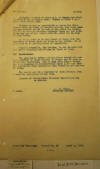 p.
9 p.
9
Matiguas is about 12 miles N.E. of
Muymuy and about 15 miles N.E. of Tierra
Azul. Muymuy is about 8 or 9 miles from
Tierra Azul.
Moncada maintains communications among
his three forces daily by means of
mounted patrols, each force sending one
mounted patrol to each of the other two
forces. As will be seen he occupies
interior lines and can reinforce any one
of his armies with the other two in four
or five hours.
He is reported to be very short of food,
with the exception of fresh beef, of
which he has plenty. He is also said to
be getting short of ammunition.
General Escamilla, the Mexican, is now
charged with conducting foraging
expeditions in quest of food.
(q) Conclusions.
The government forces are now large
enough and are in a position to crush
Moncada if Viquez can be made to attack
him vigorously. But so much time (three
weeks) has been consumed in
concentrating about 3,500 men that one
can hardly help concluding that Viquez
is not anxious to fight.
The armies are in a position to force
Moncada into a decisive engagement at
any time.
Sources of information: Personal
observation and as stated.
3 encl.
A. W. Bloor,
Military Attaché.
United States National Archives, College Park
MD, Record Group 165, Entry 77, Box 2660.
Transcribed by Nicholas J. Quadrini.
|
